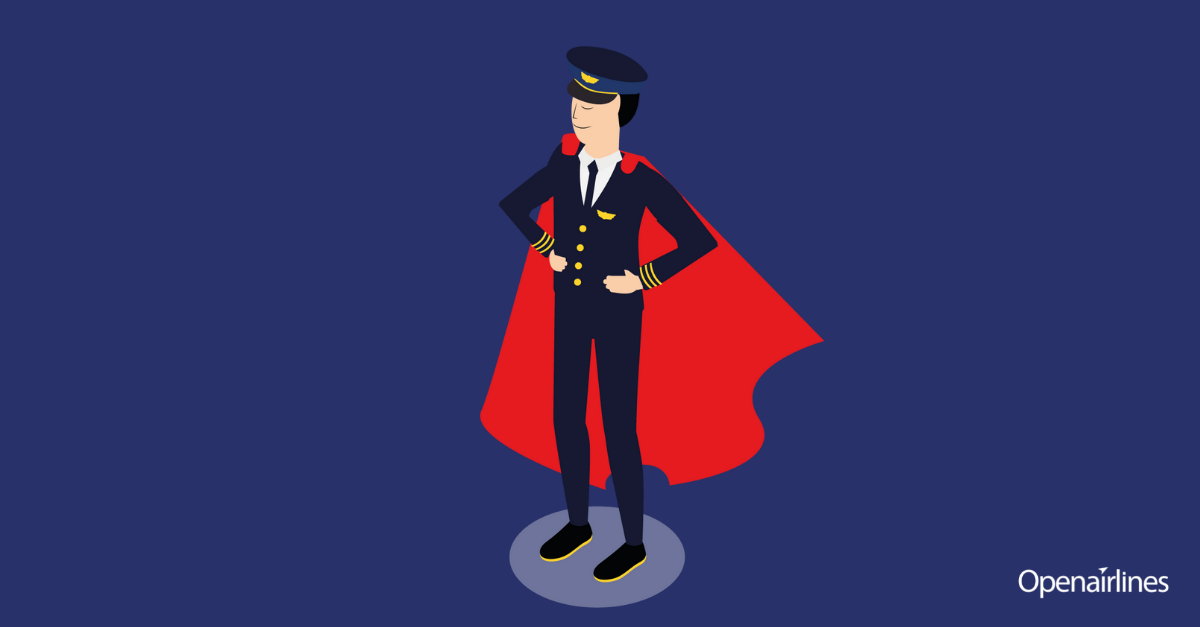How do pilots play a major role in aviation transition?
Aviation is at a turning point and is probably facing its greatest challenge, the environmental transition, while it is still under the incredible economic burden of the Covid crisis. The industry has recently set ambitious objectives for reducing its carbon footprint. If technology is essential to meet this challenge, people can play a significant role, especially pilots.
Pilots' importance
Lighter structures, new aerodynamics, more efficient engines, hydrogen, electricity, technological promises regarding aviation are numerous. Nevertheless, some of these promising perspectives need to be developed and will probably not mature until the next decade. Since the transition cannot wait, the industry must innovate by developing ways to reduce emissions from today's flights with the existing generation of aircraft.
From now on, pilots can act by applying eco-flying best practices, a set of procedures that aim to reduce the impact of flights on our planet.
Fuel saving best practices
Eco-flying best practices are probably the most concrete and accessible means for airlines to implement sustainable aviation. From the parking block at the departure airport to the one at the arrival airport, there is a whole set of procedures that pilots can apply to reduce their fuel consumption and, therefore, their CO2 emissions.
These best practices may include the preparation of the aircraft: they calculate the optimal volume of jet fuel required; but also, the preparation of the flight: choice of routes depending on the weather, and congestion based on time of day, etc. It may also concern the execution of the flight: advocate where a continuous descent is possible (versus a traditional step descent), the use or not of the thrust reversers, the configuration of the flaps, or shutting down an engine during taxi.
Here you can find the most common fuel savings best practices.
Flight Operations
• Engine out taxi out
• Reduced Takeoff Flaps
• Reduced Thrust Takeoff
• Reduced Acceleration Altitude
• Optimal Flight Level
• Continuous Descent Approach
• Reduced Landing Flaps
• Idle Reverse Thrust
• Engine Out Taxi In
All together, these practices can save hundreds of kilos of fuel on a single flight and thus act concretely to reduce the impact of aviation on the environment. If all pilots were applying these fuel efficiency practices on their flights, estimations show that they could save from 20 to 50 million tons of carbon emissions! But to achieve such a result, every airline worker needs to be involved in enacting real change.
Committed
More and more pilots are becoming aware of their crucial role in reducing emissions from their flights. They increasingly decide to commit themselves and to put forward their action for green aviation. Some do not hesitate to share the consumption of their flight and the best practices they have applied on their social networks or with their passengers.
This commitment goes even further for some of them since they do not hesitate to join the Green Pilot movement and associate themselves with defending and promoting sustainable aviation. This commitment is even more critical as pilots are now on the front line. They are the faces of aviation and must therefore convey to the public the industry's efforts in terms of sustainable development. Engaged pilots can help to change behaviors and to promote energy transition.
Green Pilot supports these best practices by bringing these actors together and encouraging them to exchange and share their advice and recommendations.
LEARN MORE
Pilots and airlines are acting for the planet. Join the Green Pilot movement!


